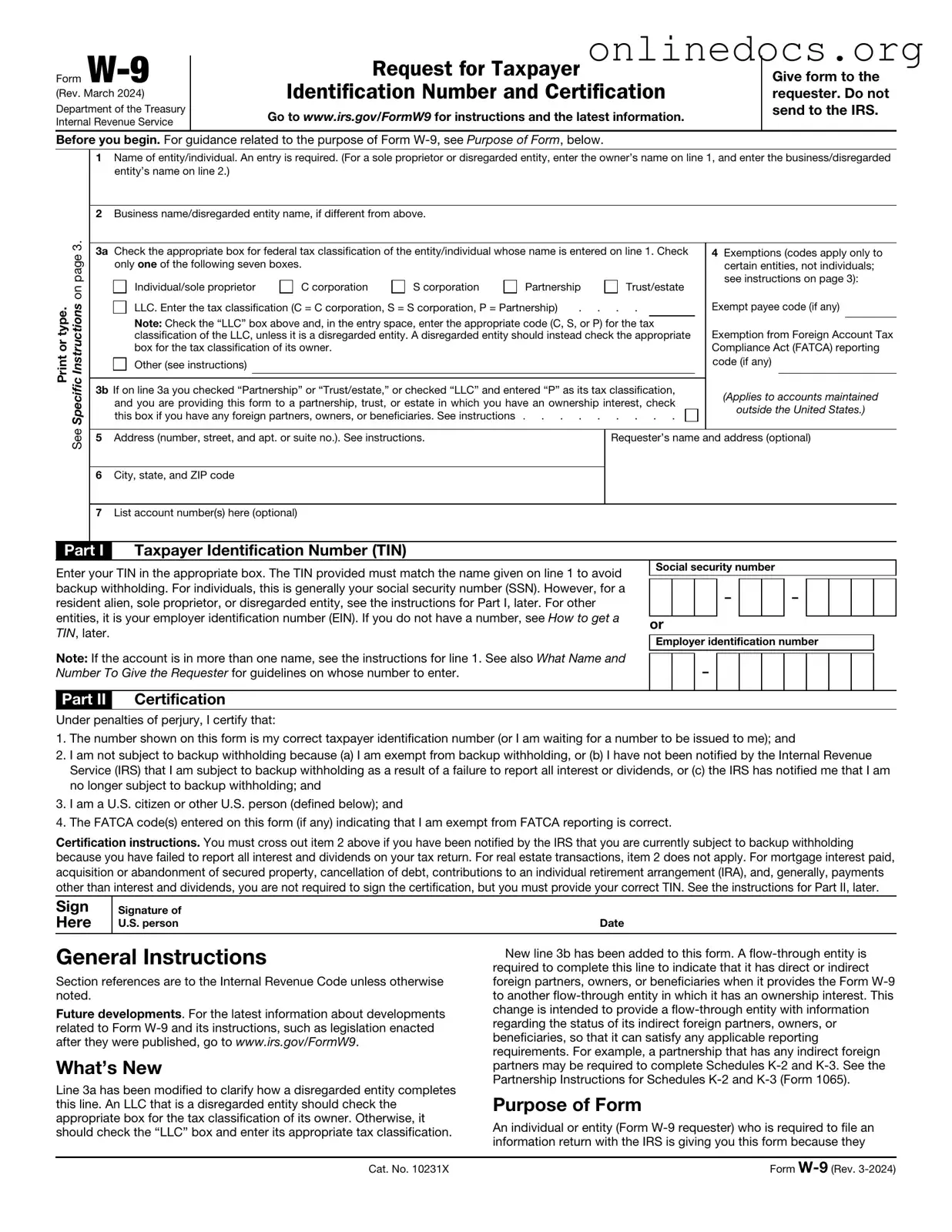The IRS W-4 form is a document that employees use to indicate their tax situation to their employer. Similar to the W-9, the W-4 collects personal information, including the employee's name, address, and Social Security number. The purpose of the W-4 is to determine the amount of federal income tax to withhold from an employee's paycheck. Both forms are essential for accurate tax reporting and compliance, ensuring that the correct amount of taxes is paid throughout the year.
The 1099 form series is another document that shares similarities with the W-9. While the W-9 is used to provide taxpayer information, the 1099 forms report income received by independent contractors, freelancers, and other non-employees. The 1099 relies on the information provided in the W-9 to accurately report earnings to the IRS. This relationship emphasizes the importance of the W-9 in establishing the proper tax identification for reporting purposes.
The IRS Form 1040 is the standard individual income tax return form. Like the W-9, it requires personal information, including name, address, and Social Security number. The 1040 form serves as a comprehensive summary of an individual's income, deductions, and credits for the tax year. While the W-9 is used to gather information for reporting, the 1040 is the final document that individuals submit to the IRS to settle their tax obligations.
The IRS Form 4506 is a request for a copy of a tax return. Similar to the W-9, it requires personal identification information to verify the requestor's identity. Both forms serve as tools for individuals to manage their tax records and ensure compliance. The W-9 may be used to provide necessary information for the IRS, while the 4506 allows taxpayers to access their past filings for various purposes, including loan applications or audits.
The IRS Form SS-4 is an application for an Employer Identification Number (EIN). This form, like the W-9, collects essential identifying information, including the name and address of the business entity. The SS-4 is used by businesses to obtain an EIN, which is necessary for tax reporting and compliance. Both forms facilitate the identification of taxpayers, ensuring that the IRS can accurately track income and tax obligations.
The IRS Form 8821 is a tax information authorization form. It allows individuals to authorize another person to receive confidential tax information on their behalf. Similar to the W-9, the 8821 requires personal identification details, including the taxpayer's name and Social Security number. Both forms are crucial for ensuring that the IRS has accurate information about who is authorized to act on behalf of a taxpayer, thus protecting taxpayer rights and privacy.
The IRS Form 1065 is a partnership return of income. Like the W-9, it requires the identification of the partners involved in the partnership. The 1065 form collects detailed financial information about the partnership's income, deductions, and distributions. Both forms are essential for tax reporting, with the W-9 providing necessary identification for individuals receiving payments from the partnership.
The IRS Form 990 is a return for tax-exempt organizations. Similar to the W-9, it collects identifying information about the organization, including its name, address, and EIN. The 990 form provides transparency regarding the financial activities of tax-exempt entities. Both forms play a role in ensuring compliance with IRS regulations and maintaining accurate records for tax purposes.
The IRS Form 941 is the employer's quarterly federal tax return. It shares similarities with the W-9 in that it requires the identification of the employer and reports payroll taxes withheld from employees. The 941 form provides a summary of the employer's tax obligations for a specific quarter, while the W-9 is used to gather the necessary information for reporting payments to independent contractors and other non-employees.
When preparing your financial affairs, utilizing a reliable comprehensive Power of Attorney document ensures that your designated representative can act on your behalf during critical times. This form empowers an agent to make important decisions, safeguarding your interests and providing peace of mind.
The IRS Form 1098 is a mortgage interest statement. This form requires the identification of the borrower, similar to the W-9, which collects taxpayer identification information. The 1098 reports the amount of interest paid on a mortgage, which can be deducted on an individual’s tax return. Both forms are vital for accurate tax reporting and compliance, ensuring that taxpayers receive the necessary information to claim deductions and credits.
